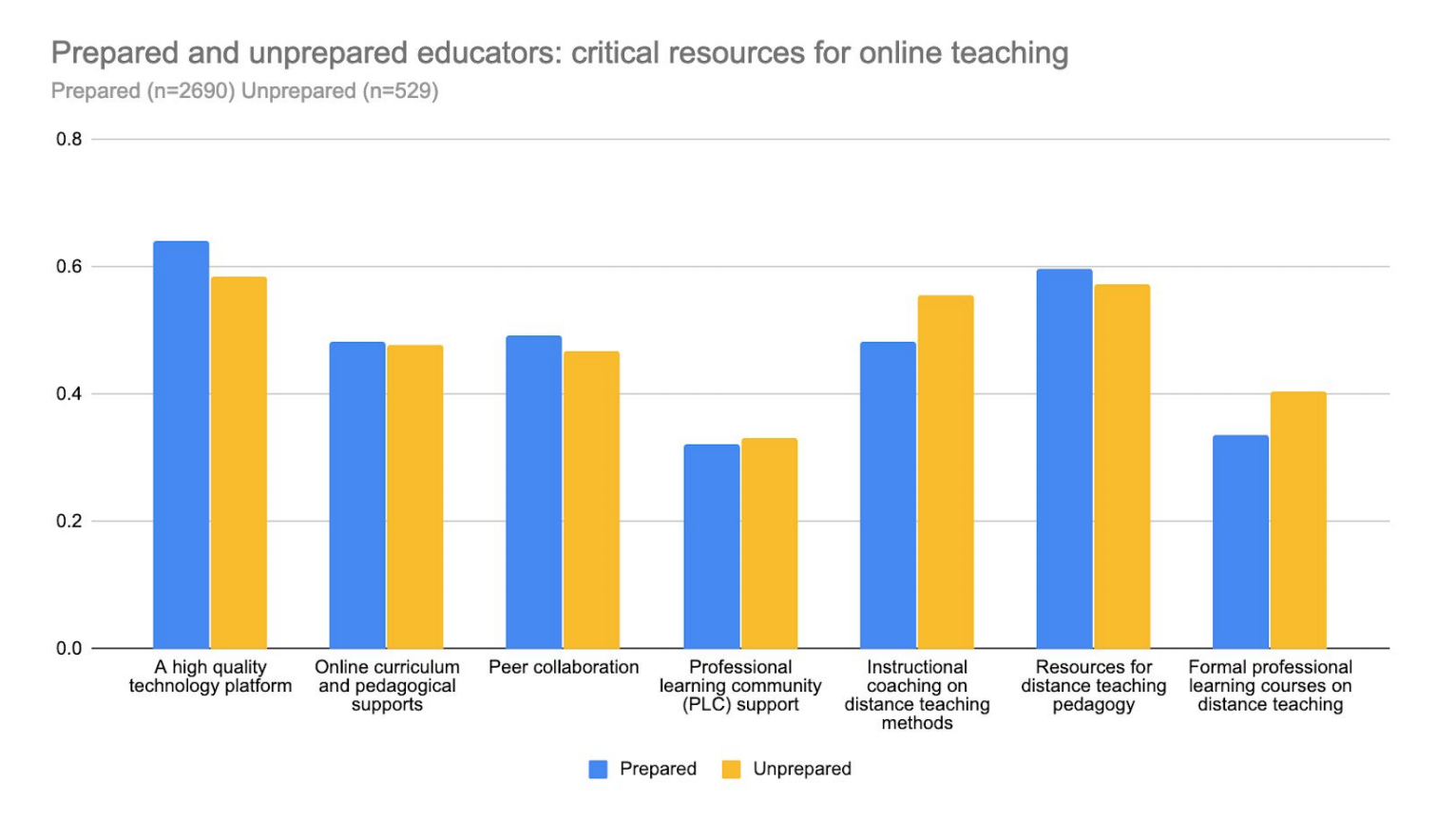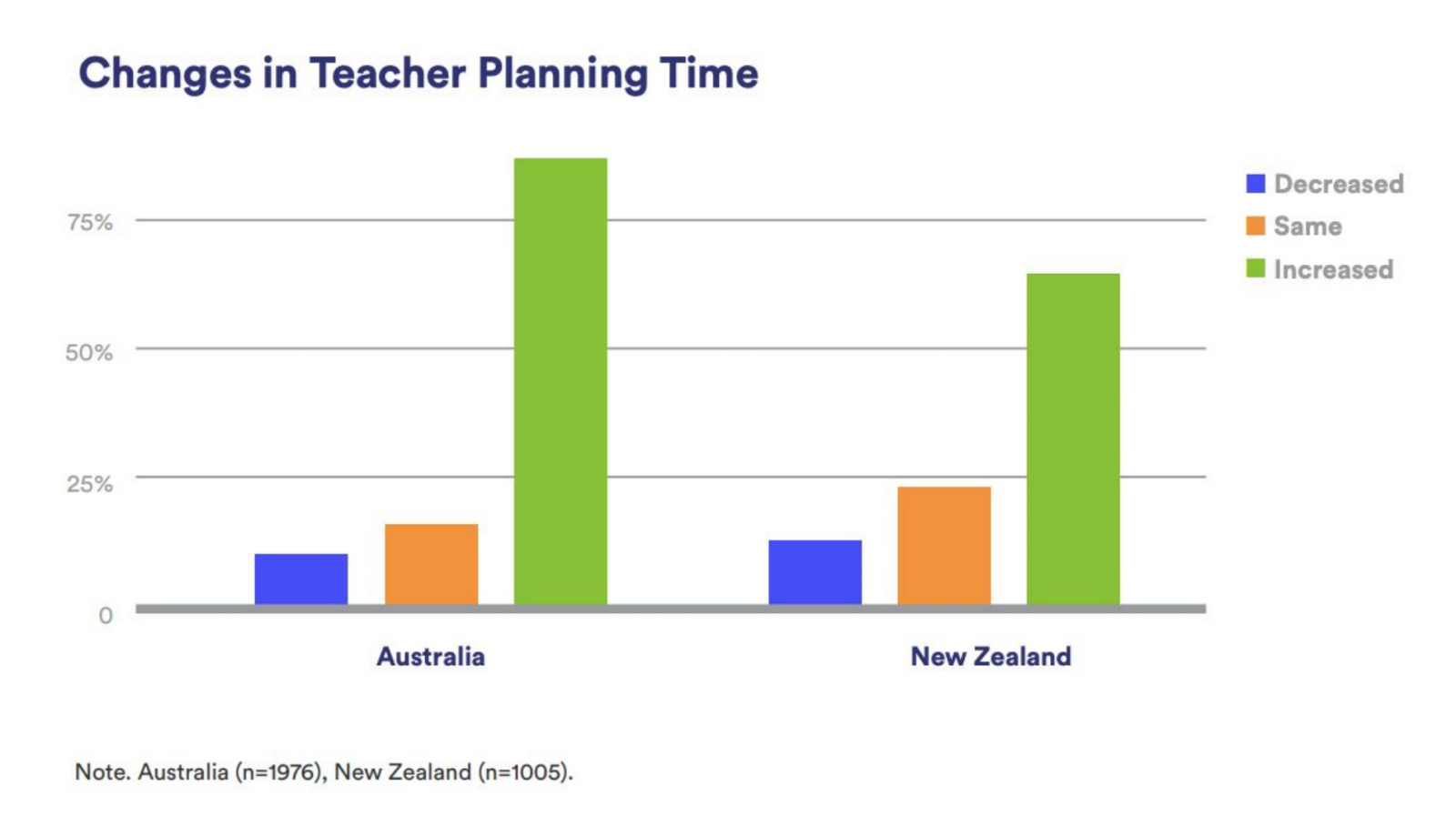
Shifting classrooms to the cloud
Thoughtworks saw the opportunity to provide extra data science capability to understand some of the more interesting questions posed by the data, and what data scientist wouldn’t sign up for this sort of extra-curricular analysis?
About Pivot
Pivot is an ed-tech company that provides data insights on teaching practice to drive continuous improvement for teachers, schools and systems. Their latest research explored the state of education during the COVID-19 pandemic.

Changes in Teacher Planning Time. Citation: Flack, C. B., Walker, L., Bickerstaff, A., Earle, H., & Margetts, C. (2020). Educator perspectives on the impact of COVID-19 on teaching and learning in Australia and New Zealand. Melbourne, Australia: Pivot Professional Learning.
What drove our collaboration with Pivot?
We’re always interested in projects that make the world a little better, so naturally we jumped at the opportunity to help educators during the COVID-19 pandemic. Pivot surveyed around 3,700 educators from Australia and New Zealand during the COVID-19 pandemic, and we jumped at the opportunity to dig deeper into the data to assist in interpreting and summarising their survey responses.
What questions did Pivot want to answer?
Pivot wanted to capture a snapshot of how educators were feeling and suggest recommendations on how best to support students, teachers and school leaders. They were specifically interested in identifying the key challenges faced by educators, how they were using educational technologies, their most immediate and pressing needs and to gauge their wellbeing.
How did we approach the project?
Since we had limited time and many questions to explore, we prioritized those questions that were high-impact and easy to deliver. We first identified educators who were struggling to teach remotely. From there we were interested in two questions: why were they struggling, and what support was most critical? In exploring why they were struggling, we looked at the technology they used at home, their type of internet connection and how comfortable they were with technology.
What were some interesting findings?
We were able to look deeper into questions regarding how to get the best outcomes for students in remote learning, how educators’ workspaces were set up for remote teaching, and how to provide support most effectively to all parties in remote education. The findings will then inform future research.
Our key findings were:
- Roughly 10.5% of educators use mobile data when delivering lessons, which suggests their household internet isn’t adequate for delivering lessons remotely.
- Educators who self-identified as 'unprepared' felt that instructional coaching and professional learning courses were more important than those that self-identified as 'prepared'.
How did our work help Pivot?
Shortly after conducting the survey, Pivot released a whitepaper, Educator perspectives on the impact of COVID-19 on teaching and learning in Australia and New Zealand. Our effort helped interpret and summarize responses for the whitepaper, and contribute to helping educators during a stressful and complex time.
How did fully-remote collaboration work?
For both Pivot and Thoughtworks, this was one of our first fully-remote collaborations after the initial introduction of restrictions due to COVID-19. At Thoughtworks, though we’ve historically employed remote-first patterns in many parts of our business, consulting work generally involves face-to-face ideas-sharing and interaction. It shouldn’t be surprising that after a few months into restrictions, now that fully-remote is the norm, we were really thrilled with how easy it was to come together with shared objectives, complementary skills and experience, and the right mix of collaboration technologies.
What’s next?
Pivot envisages further distilling data-derived insight into remote education into a series of vignettes that can inform future policy, practice and technology support, with targeted interventions. Pivot continues to explore equity in Australian schooling and technology mix being deployed in Australia and New Zealand for remote education. We support Pivot’s mission to transform teaching practice even in these unprecedented times and look forward to future improvements based on their research.
Disclaimer: The statements and opinions expressed in this article are those of the author(s) and do not necessarily reflect the positions of Thoughtworks.


















